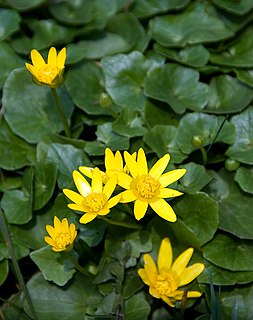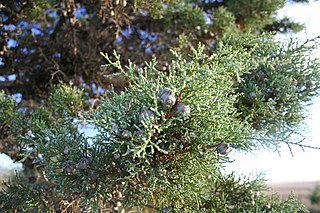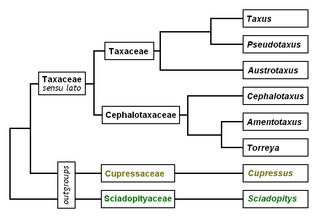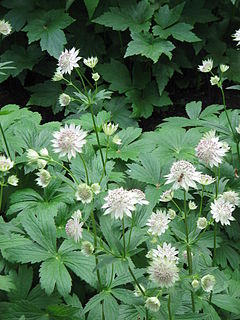
Ficaria verna, commonly known as lesser celandine or pilewort, is a low-growing, hairless perennial flowering plant in the buttercup family Ranunculaceae native to Europe and west Asia. It has fleshy dark green, heart-shaped leaves and distinctive flowers with bright yellow, glossy petals. It is now introduced in North America, where it is known by the common name fig buttercup and considered an invasive species. The plant is poisonous if ingested raw and potentially fatal to grazing animals and livestock such as horses, cattle, and sheep. For these reasons, several US states have banned the plant or listed it as a noxious weed. It prefers bare, damp ground and is considered by horticulturalists in the United Kingdom as a persistent garden weed; nevertheless, many specialist plantsmen, nursery owners and discerning gardeners in the UK and Europe collect selected cultivars of the plant, including bronze-leaved and double-flowered ones. Emerging in late winter with flowers appearing March through May in the UK, its appearance across the landscape is regarded by many as a harbinger of spring.

Cypress is a common name for various coniferous trees or shrubs of northern temperate regions that belong to the family Cupressaceae. The word cypress is derived from Old French cipres, which was imported from Latin cypressus, the latinisation of the Greek κυπάρισσος (kyparissos).

Goldenrod is a common name for many species of flowering plants in the sunflower family, Asteraceae, commonly in reference to the genus Solidago.

Reed is a common name for several tall, grass-like plants of wetlands.
Bishop's weed is a common name for several plants, all but one of which belong to the plant family Apiaceae.
Knotweed is a common name for plants in several genera in the family Polygonaceae. Knotweed may refer to:
Red bean is a common name for several plants and may refer to:
Sago palm is a common name for several plants which are used to produce a starchy food known as sago. Sago palms may be "true palms" in the family Arecaceae, or cycads with a palm-like appearance. Sago produced from cycads must be detoxified before consumption. Plants called sago palm include:

Scrophularia marilandica, also called late figwort, Maryland figwort, carpenter's square, or eastern figwort, is a flowering plant in the family Scrophulariaceae, native throughout eastern and central North America, where it is found growing in dry woods from Manitoba and Quebec south to Texas and Florida.
Rockcress is a common name used for several similar genera of flowering plants in the family Brassicaceae:
The name coffeeweed or coffee weed may refer to various plants used as coffee substitute, including:

Fan palm as a descriptive term can refer to any of several different kinds of palms (Arecaceae) in various genera with leaves that are palmately lobed. Most are members of the subfamily Coryphoideae, though a few genera in subfamily Calamoideae also have palmate leaves. Fan palm genera include:
Pleomele is used a common name for several cultivated ornamental plants and may refer to:
Cat's claw or cat's claws is a common name for several plants:
Pickleweed is a common name used for two unrelated genera of flowering plants:
Camphorweed is a common name for several plants and may refer to:
Wild celery is a common name for several plants. It can refer to:

Yew is a common name given to various species of trees.

Bulrushes is the vernacular name for several large wetland grass-like plants in the sedge family (Cyperaceae).

Masterwort is a common name for several plants in the family Apiaceae and may refer to:
This page is based on this
Wikipedia article Text is available under the
CC BY-SA 4.0 license; additional terms may apply.
Images, videos and audio are available under their respective licenses.








